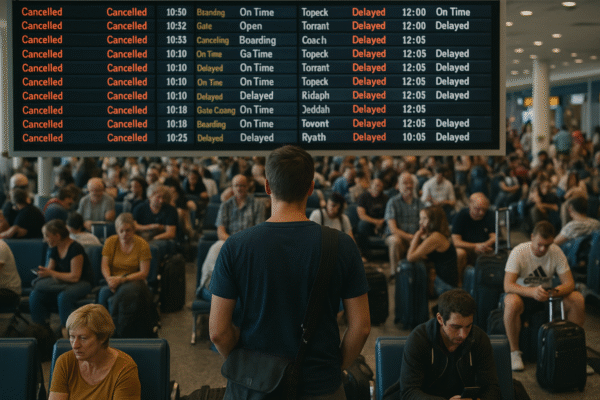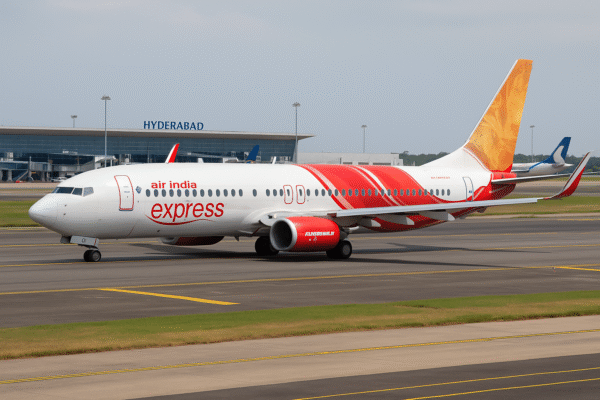India’s aviation sector is witnessing a dramatic transformation as Air India Express, the low-cost carrier of the Air India group, accelerates its expansion across metro hubs. With strong operations in Hyderabad (HYD) and Bengaluru (BLR), the airline is positioning itself to cater to India’s rapidly growing demand for air travel among urban travelers.
The push aligns with the country’s increasing preference for quick and affordable connectivity between large cities, supported by rising middle-class incomes and expanding tourism. Major hubs like Delhi, Mumbai, Hyderabad, and Bengaluru now serve as gateways not only for domestic travelers but also for international tourism.
Non-Metro Cities: Still Struggling for Connectivity
Despite impressive growth in metro networks, Tier-2 and Tier-3 cities remain underserved. Air India Express operates 42 non-metro routes, translating into around 302 weekly flights and nearly 55,000 seats. While this ensures minimal coverage, the gap between metro and non-metro services is evident.
In comparison, IndiGo—the market leader—operates nearly 1,100 weekly flights across smaller cities, offering over 200,000 seats. This highlights how regional travelers in non-metro destinations such as Ranchi, Guwahati, and Bhubaneswar still face limited frequency and fewer route options.
Tourist Hubs and Secondary Airports
Tourism is among the biggest beneficiaries of improved metro connectivity. Goa (GOX), Jaipur (JAI), and Kochi (COK) continue to attract strong demand, but flights from smaller origins often operate at low frequency. For example, Air India Express connects Ahmedabad to Goa daily, but other regional cities see fewer than one flight per day.
Government initiatives like the UDAN scheme (Ude Desh ka Aam Naagrik), which subsidizes air routes to smaller towns, have supported some of these connections. Still, many tourist hotspots in eastern and northeastern India, such as Shillong (SHL) and Imphal (IMF), rely heavily on limited flights. Expanding services to these locations could significantly boost tourism revenue.
Strategic Hubs: Hyderabad and Bengaluru Lead the Way
Air India Express has strategically positioned Hyderabad and Bengaluru as its key secondary hubs. This decision helps connect South India with both metros and regional centers. These hubs not only serve domestic travelers but also play an important role in international tourism, with direct connections to the Middle East and Southeast Asia.
Hyderabad’s Rajiv Gandhi International Airport has emerged as a favorite for both corporate and leisure travelers, while Bengaluru continues to be a hub for both technology professionals and inbound tourism. Together, they strengthen India’s role as a global aviation hub.
Non-Metro Operations and Tourism Impact
Among non-metro cities, Guwahati (GAU) leads Air India Express’s network with six city-pairs and 54 weekly flights. This is significant because the Northeast region is a growing tourism hotspot, with demand for eco-tourism, adventure travel, and cultural exploration.
Similarly, Pune (PNQ) and Bhubaneswar (BBI) act as regional gateways. Pune supports business travel while also serving leisure markets, whereas Bhubaneswar plays a vital role in religious and heritage tourism, with easy access to destinations like Puri and Konark.
Air India vs IndiGo: Market Positioning
The competitive landscape is dominated by IndiGo, which has been aggressive in expanding non-metro services. While Air India Express focuses on connecting smaller cities cautiously, IndiGo has made deeper inroads into underserved regions.
However, Air India Express holds a monopoly on several CAT-II and CAT-IIA routes, meaning it is the only operator on certain low-demand but essential connections. This gives the airline an advantage in exclusive markets and ensures basic accessibility for travelers in smaller cities.
Challenges in Non-Metro Expansion
Airlines face several challenges in penetrating Tier-2 and Tier-3 markets. These include:
- Lower Passenger Demand: Non-metro routes often have inconsistent load factors.
- Infrastructure Limitations: Many smaller airports lack full-service facilities.
- Operational Costs: Running frequent flights to smaller destinations can reduce profitability.
Because of these factors, airlines like Air India Express prefer strengthening metro routes first while gradually testing smaller city demand.
Outlook: What It Means for Tourism in India
For India’s booming tourism industry, expanding air connectivity is crucial. Metro hubs will continue to dominate growth, enabling smoother travel for both domestic and international tourists. However, to unlock the full potential of destinations in Northeast India, Central India, and Coastal regions, greater non-metro connectivity is essential.
If Air India Express increases investment in Tier-2 and Tier-3 cities, it could boost religious tourism, eco-tourism, and heritage tourism. Regional travelers would benefit from affordable direct connections, while international tourists would find it easier to explore beyond the metros.
For now, Air India Express remains cautious, optimizing fleet utilization at metro hubs while balancing obligations on smaller routes. Whether the airline decides to match IndiGo’s aggressive expansion in non-metros will determine the pace of India’s tourism accessibility in the coming years.
For more travel news like this, keep reading Global Travel Wire















